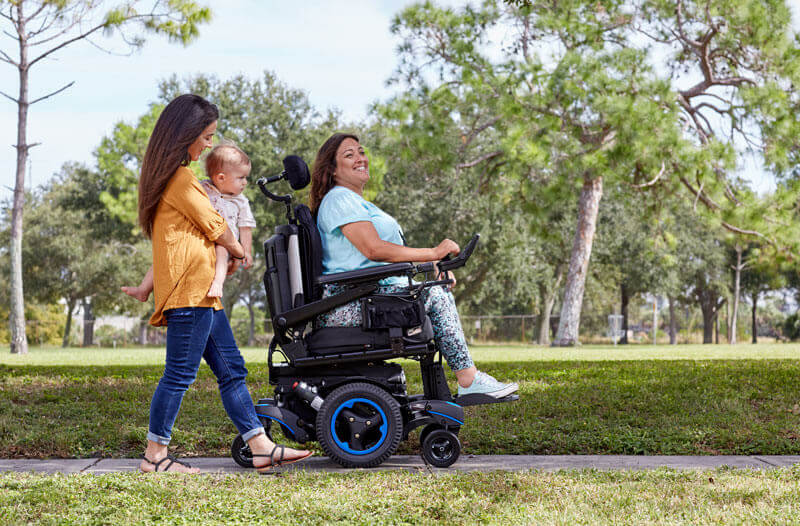Over the past few years, battery technology has come a long way. However, some of the advice provided regarding the maintenance of power wheelchair batteries has not made great progress. This has led to a series of confusing and sometimes contradictory instructions about the "best" way to take care of batteries. In this article we will clear up some of these myths and give you seven tips for you to follow.
Discover your wheelchair batteries
The batteries used in mobility products are very different from the batteries used in a car, for example. Car batteries are designed to release a large amount of energy in a short period of time, whereas batteries used in mobility products such as power wheelchairs (commonly called deep-cycle batteries) release energy uniformly over a long period of time.
Sunrise Medical's power wheelchairs use "maintenance-free" batteries only.
These maintenance-free batteries make use of an electrolyte transport method commonly called "gel," which is totally sealed inside the outer shell of the battery. As the name implies, no maintenance is required except for regular recharging.
Since the battery cover is sealed, acid cannot be spilled and therefore it can be transported in complete safety, even on a plane if they are IATA-approved. Please double-check that the individual chair battery is IATA-approved before taking it on a plane, as this does not apply to every single chair.

Seven tips for battery care
1. Recharge the batteries of your power wheelchair every night
Regardless of how much you have used the chair, and even if you haven't used it at all that day, the batteries should be fully recharged every night.
2. Never interrupt the charging cycle
Wait until night to proceed with a full recharge. As a general rule, the maintenance-free batteries of our chairs take longer to fully recharge than the lead-acid batteries of other products, so please bear this in mind.
3. It's better to leave the batteries charging if you aren't going to use the chair for a few days
This will not harm the batteries as long as the charger is connected to a power source. If the charger is not connected to the power, the batteries may run down. If the chair isn't going to be used for weeks at a time, consider using a 10-amp trickle charger, as some 8-amp chargers may actually discharge the batteries if left connected for extended periods of time.
4. If you aren't using your power wheelchair for more than 15 days, disconnect the batteries
Disconnect the cable that connects both batteries if you won't be using your power wheelchair for more than 15 days. Make sure you fully charge the batteries at least once a week.
5. Regularly check if the battery terminals show any signs of corrosion
If there is corrosion, clean the terminals completely (a wire brush is ideal for this) and re-grease the terminal with petroleum jelly (not with ordinary oil). Make sure that the terminal nuts & screws, wire, and wire clip are completely covered in petroleum jelly.
6. When disconnecting the charger, pull on the connector (not the cable)
Make sure that the cable is placed in such a way that nobody trips or steps on it, and make sure it is not subject to damage or tension of any other kind.
7. Do not use extension cables
Using an extension cord could cause a fire or an electric shock. Do not use extension cables with your power wheelchair charger.
If you follow these basic tips, you'll help prevent your wheelchair's batteries from falling to a state of deep discharge, which would render them useless.
Most of the stories here on LiveQuickie.com were submitted by readers. Do you have a story to tell? We'd love to hear it. Submit your story here.